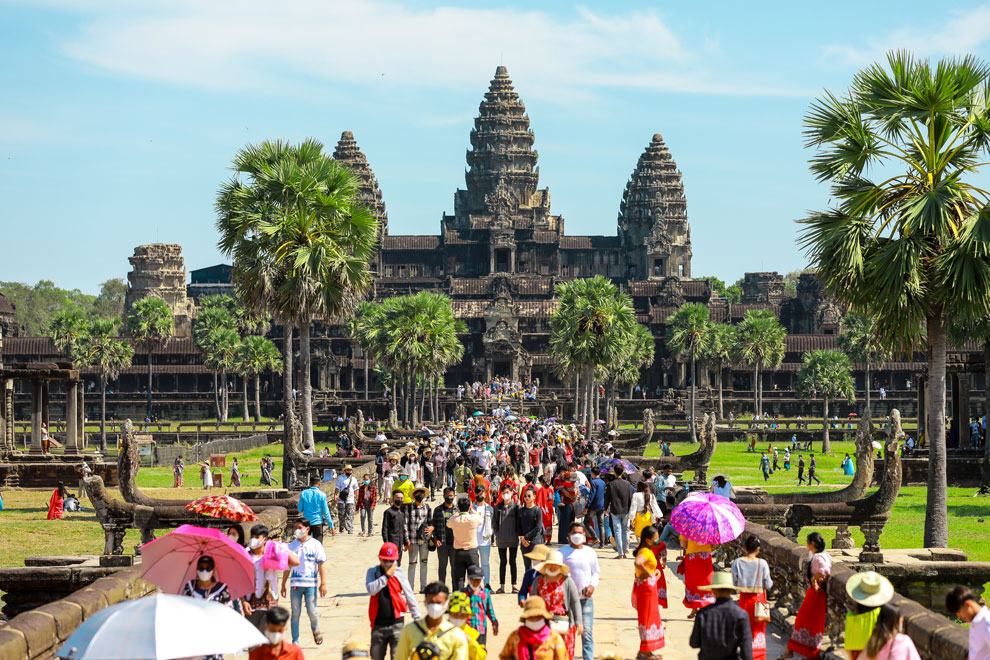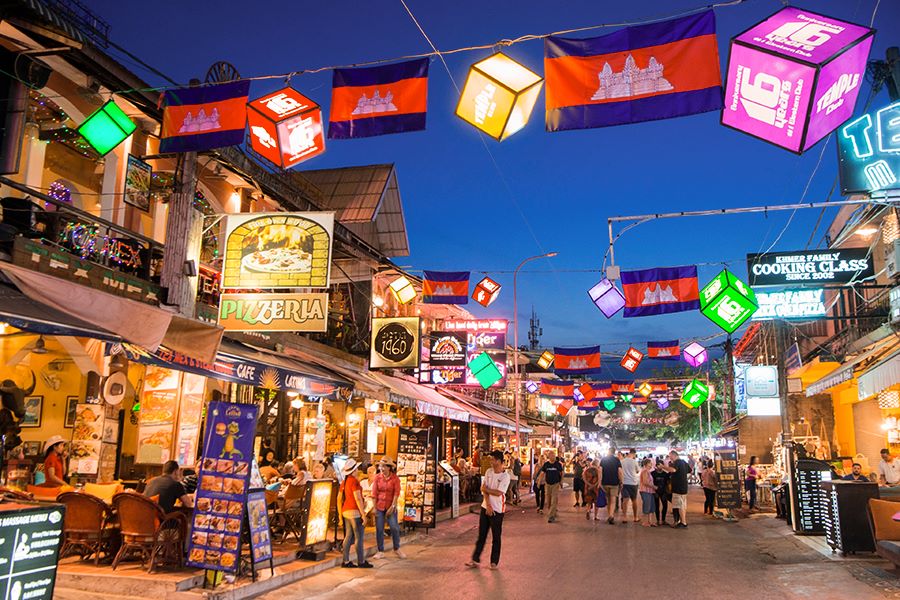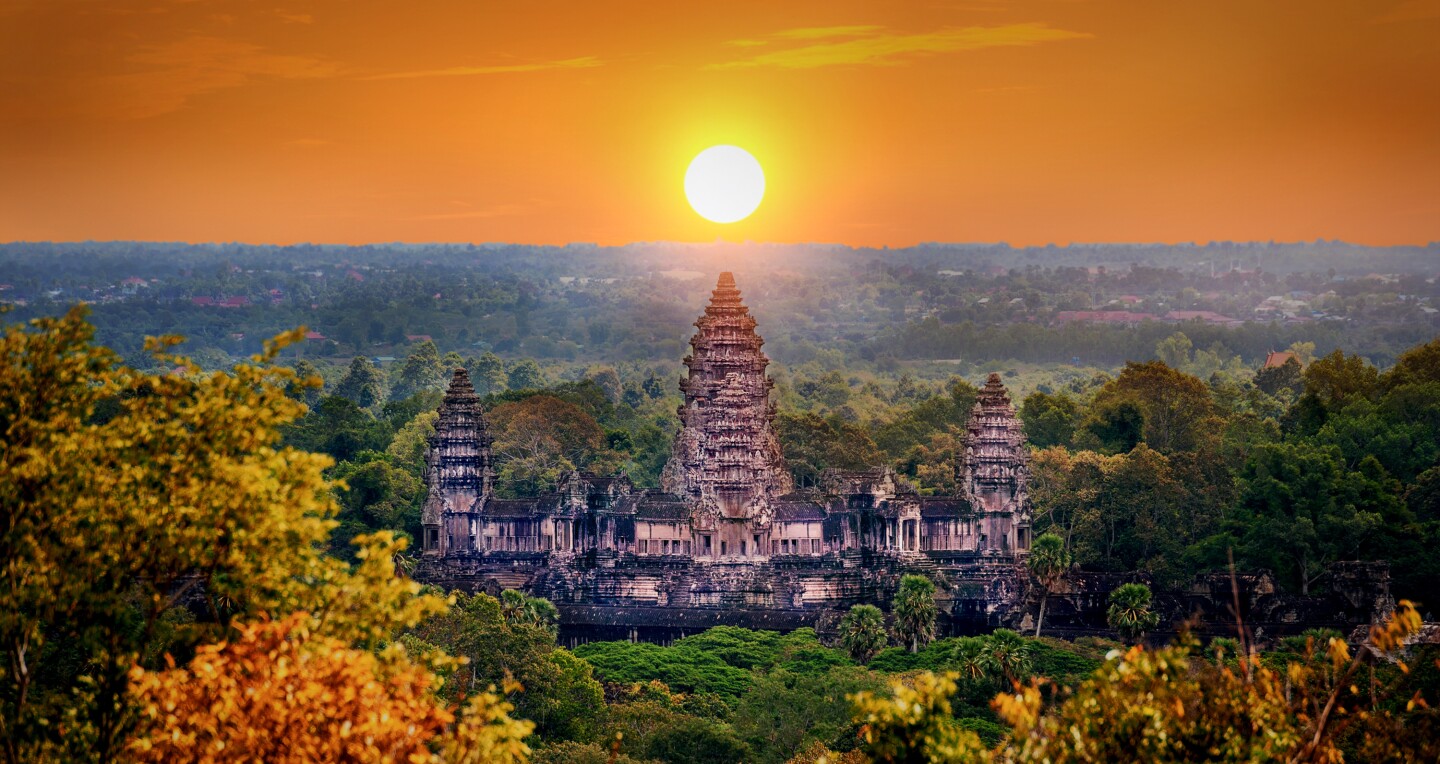Siem Reap: Gateway to the Wonders of Angkor
Siem Reap, a charming town in northwestern Cambodia, is best known as the gateway to the world-famous Angkor Archaeological Park. While the ruins of Angkor are the primary draw, Siem Reap itself offers a blend of history, culture, and natural beauty, making it a must-visit destination for travelers seeking to experience the magic of Cambodia.
The Angkor Temples: A Marvel of Ancient Architecture
The primary reason tourists flock to Siem Reap is the magnificent Angkor Wat, the largest religious monument in the world. This 12th-century temple, built by King Suryavarman II, is a masterpiece of classical Khmer architecture, with its intricate carvings, towering spires, and expansive galleries. It is a symbol of Cambodia and a UNESCO World Heritage site that continues to amaze visitors from all over the globe.
Beyond Angkor Wat, the entire Angkor Archaeological Park is home to hundreds of temples, each with its unique charm. Bayon Temple, with its famous smiling stone faces, and Ta Prohm, where ancient trees intertwine with the ruins, are two of the most popular sites in the park. Visitors can easily spend days exploring these awe-inspiring structures, discovering hidden temples and soaking in the incredible history.
For those seeking a more off-the-beaten-path experience, temples such as Banteay Srei, a smaller temple with exceptionally detailed carvings, and Preah Khan, a temple enveloped by jungle, provide a quieter, more intimate exploration of Angkor’s grandeur.

A Blend of Tradition and Modernity
Siem Reap is not just about the temples—it’s also a lively town brimming with cultural and social energy. The town’s Old Market (Psar Chaa) is a bustling hub where visitors can browse for local handicrafts, textiles, and traditional souvenirs, while the Angkor Night Market offers a vibrant nighttime shopping experience with an array of handmade goods and Cambodian art.
The town itself has grown rapidly, with an increasing number of hotels, restaurants, and bars to cater to the growing influx of tourists. Siem Reap has become known for its fusion of traditional Khmer food and international flavors, with local restaurants serving up dishes like amok (a traditional curry) and nom banh chok (rice noodles with green curry). The variety of eateries—ranging from casual street food stalls to upscale dining venues—offers a perfect opportunity to taste the flavors of Cambodia.
A Taste of Khmer Culture
Siem Reap is also rich in Cambodian culture, and visitors can experience it through various performances and exhibitions. The Phare Circus, a contemporary circus with acrobatics, music, and storytelling, showcases the talents of Cambodian youth and highlights traditional folklore and modern creativity. The Angkor National Museum offers an informative introduction to the history of Angkor, with exhibits showcasing artifacts from the ancient civilization.
For those interested in spirituality, Siem Reap is home to several active Buddhist monasteries and pagodas where visitors can observe local practices, interact with monks, and learn about Cambodian Buddhism.

Nature and Relaxation
While the Angkor temples are the main attraction, Siem Reap also offers opportunities to enjoy Cambodia’s natural beauty. Tonle Sap Lake, Southeast Asia’s largest freshwater lake, is located just outside the town. Visitors can take boat tours to visit the floating villages, where communities live on the water, and experience a different aspect of Cambodian life.
For those seeking relaxation, Siem Reap’s lush landscapes and tranquil surroundings make it an ideal place to unwind. Many resorts and spas offer peaceful retreats, with traditional Khmer massages and treatments inspired by ancient healing practices.

Responsible Tourism
Siem Reap’s rise as a tourist destination has also brought challenges, particularly in terms of sustainable tourism. The community has increasingly focused on preserving both the natural environment and cultural heritage. Visitors are encouraged to respect local customs, reduce plastic usage, and support responsible tourism initiatives that contribute to the local economy while protecting the delicate ruins of Angkor.
Conclusion
Siem Reap is a destination that seamlessly combines ancient wonders with modern charm. It’s not just a place to marvel at the awe-inspiring temples of Angkor but also a vibrant town that showcases the warmth and culture of Cambodia. Whether exploring the grandeur of Angkor Wat, wandering through bustling markets, or relaxing by the tranquil waters of Tonle Sap Lake, Siem Reap offers a rich, unforgettable experience that captures the essence of Cambodia.




